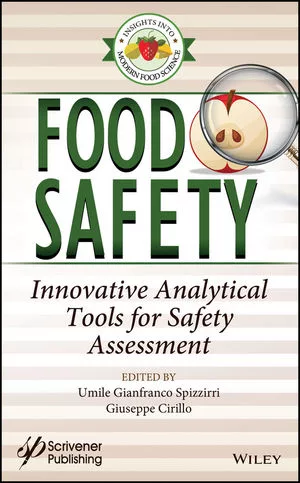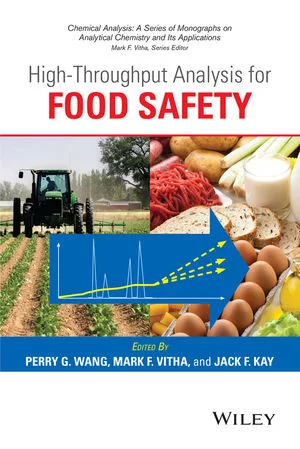Maximizing Insurance Coverage for Food Contamination Claims
Foodborne illness claims are among the greatest financial risks facing the food industry. After a contamination event, all companies in the food supply chain—from farm to supermarket—may unexpectedly find themselves in the cross hairs of aggressive plaintiffs’ lawyers, regardless of the ultimate source of the contamination.
Insurance is a critical risk management tool that all companies in the food industry should employ to protect themselves against the risk of food contamination claims. However, recent lawsuits involving disputes over insurance coverage for food contamination losses demonstrate that executives at food companies can and should do more to protect themselves against the risk of an uncovered claim by paying careful attention to the fine print when purchasing commercial general liability (CGL) and commercial property insurance policies, and by negotiating coverage enhancements to fill potential gaps in coverage. Moreover, the manner in which a claim is characterized when submitted to an insurer can often be the difference between a covered and an uncovered claim.
This article briefly summarizes recent case law involving coverage claims for food contamination losses under standard CGL and commercial property policies. As the decisions discussed below illustrate, coverage determinations are fact specific and driven by policy language. Therefore, policyholders who are concerned about contamination and recall liabilities should work closely with their brokers and experienced coverage counsel to obtain the most pro-policyholder language available to maximize coverage in the event of a contamination or product recall loss, and to avoid pitfalls that can defeat coverage when submitting a claim.
CGL Coverage
Every food company should purchase CGL coverage to protect itself against the risk of third-party foodborne illness claims. A typical CGL policy promises that the insurer will defend and indemnify its policyholder for third-party claims involving “property damage” and “bodily injury.” Most policies define “bodily injury” broadly to include third-party claims involving sickness, disease or death, so foodborne illness claims arising out of contaminated products fall squarely within the coverage provided by a standard CGL insuring agreement. But triggering the insuring agreement is only half the battle.
Virtually all CGL policies contain a list of standard exclusions that are de-signed to exclude coverage for certain types of claims that otherwise might be covered. For example, CGL policies issued to food companies increasingly contain “mold,” “bacteria” and/or “contaminant” exclusions that insurers may construe in unexpected ways to deny coverage. In fact, one court recently validated an insurer’s reliance on a “pollution” exclusion to deny coverage for a property damage claim against a restaurant on the grounds that curry odors emanating from the restaurant constituted “pollution.”[1] While this may be an extreme example, an insurance company may argue that food products like yogurt or cheese trigger “fungus” or “mold” exclusions, and claims involving Salmonella or Listeria trigger “bacteria” or “contaminant” exclusions in CGL policies. It is important to be aware of these general exclusions when purchasing CGL coverage and to negotiate appropriate carve-backs to ensure coverage is available.
In addition to these exclusions, which may be buried in the fine print, recent case law shows that companies should be wary of other hidden policy exclusions and limitations to coverage that might be used to deny or limit recovery for third-party contamination claims.
One Claim or Two? Beware the Single-Occurrence Trap. CGL policies usually contain self-insured retentions, peroccurrence limits and hidden definitions of the term “occurrence” in “batch-lot” endorsements that may operate to expand or limit coverage, depending on the facts of a particular claim and policy wording. For example, a typical policy may contain a batch clause providing that damages arising out of “one lot” of “your products” shall be deemed to be a single occurrence, and most policies provide for per-occurrence limits that are lower than the aggregate limits of the policy. Under these circumstances, even if a food production company faces multiple foodborne illness claims, if the claims arise out of contamination to the same batch of products, the insurer will inevitably argue that the lower per-occurrence limits apply.
Case law addressing the single-occurrence issue demonstrates that this issue also may limit coverage for restaurants facing contamination suits, even in cases where the contaminated food at issue is prepared and served at different locations. In one recent case involving claims by hundreds of people who became ill after eating Escherichia coli-contaminated food that was prepared and served by a restaurant at two different locations, the primary and excess CGL insurers sought declaratory relief that all instances of the contamination constituted a single occurrence under the primary policy. The net impact of that interpretation meant that the lower “per-occurrence” limits of the primary policy applied, and the primary policy was not exhausted, leaving the policyholder without access to the excess limits. After a trial court rejected the insurers’ interpretation, the U.S. Court of Appeals for the Tenth Circuit reversed, holding that because the cause of the injuries—that is, the restaurant’s preparation of contaminated food—was the same, there was only one occurrence under the primary policy,[2] and only $1 million available to pay the underlying claims.
Of course, in some circumstances, a finding that multiple claims involve multiple occurrences may not be a desirable outcome if your company’s policy happens to have high per-occurrence self-insured retentions or deductibles. To maximize coverage, it is critical to pay attention to these issues when negotiating applicable deductibles, limits and occurrence definitions and also before making claims.
“Your Work” Exclusions May Be Cited to Deny Coverage for Contamination Claims Arising Out of Your Company’s Own Negligence. CGL policies often contain exclusions for claims that arguably arise out of your company’s own negligence in the manufacturing, packaging or distribution of food products under the so-called “your work” exclusion. In one recent case, a packaging company was forced to recall over 800,000 cases of contaminated dog food it was packing for a customer when the dog food cans were damaged by a knife blade attached to a conveyor belt. The damage to the cans resulted in contamination and required the cans to be recalled and destroyed. After the customer sought compensation from the packaging company for its loss, the packaging company submitted a claim with its CGL insurer for covered property damage.
Citing a “your work” exclusion in the policy that precluded coverage for property that must be “restored, repaired or replaced because ‘your work’ was incorrectly performed,” the insurer denied coverage. A trial court agreed with the insurer’s position, finding that the packaging company’s negligent “work” proximately caused the contamination at issue, and that decision was recently affirmed on appeal by the Sixth Circuit.[3] This case highlights the importance of paying careful attention to policy provisions that may operate to divest coverage for accidental contamination claims that arguably could be attributed to your own negligence.
A Third Party’s Reputational Damages or Lost Sales Following a High-Profile Contamination Event May Be Excluded. CGL and accidental contamination policies also may not cover third-party claims for reputational damages or lost sales following a high-profile contamination event. In late 2006, Taco Bell faced claims arising out of a foodborne illness outbreak in the northeastern United States after the U.S. Centers for Disease Control and Prevention determined that the outbreak was most likely caused by E. coli-contaminated lettuce consumed at Taco Bell restaurants. Taco Bell and over 500 Taco Bell franchisees sued Ready Pac foods, the likely supplier of the contaminated lettuce, seeking damages for bodily injury and property damage, as well as damages suffered because of the alleged decline in patronage at all Taco Bell restaurants resulting from the outbreak.
After Ready Pac sought coverage under its CGL policies, its insurers sought a declaratory judgment that the policies did not cover the Taco Bell plaintiffs’ lost patronage claim on the grounds that claims for economic losses were not covered under the CGL policy. Siding with the insurers, a federal court in California agreed that Taco Bell’s claim for reputational damages was not covered under the CGL policies.[4] Thus, Ready Pac had no coverage for a significant component of Taco Bell’s damages.
Courts Will Reject Coverage Denials That Defy Common Sense. One aspect that favors food companies in the complexities of commercial insurance is that most jurisdictions have adopted pro-policyholder rules of interpretation, such as the doctrines of reasonable expectations and contra proferentem (a standard in contract law that ambiguous clauses in a contract should be interpreted against the party that insisted they be included), to prevent insurers from interpreting exclusions in ways that defy common sense. Last year, for example, a court rejected an insurer’s attempt to rely on a “communicable disease exclusion” to deny coverage under a general liability policy for Mincing Trading’s losses arising from a foodborne Salmonella outbreak.[5] In denying the insurer’s motion for summary judgment, the court cited the doctrine of reasonable expectations and held that it was “objectively reasonable” for Mincing Trading to believe it would be covered because of “actual or alleged foodborne bacteria, including Salmonella, particularly in situations in which the bacteria [was] not alleged to have caused any disease.”[5] As the court concluded, “this would be precisely the type of risk Mincing would want to insure against.”[5]
While policyholders should always seek to negotiate the best language available in their policies, pro-insured rules of construction may help level the playing field when a food company is faced with a questionable coverage denial based on ambiguous policy language that was drafted by an insurance company.
Commercial Property Coverage
Another critical component of any food company’s risk management strategy should be first-party commercial property coverage. This type of coverage insures against losses stemming from property damage at a food company’s site, and also may provide coverage for business interruption losses or supply chain disruption. Two recent cases demonstrate that the availability of coverage under these policies often hinges on courts’ interpretations of policy exclusions that may apply to contamination.
In one recent case, an insurer denied coverage for a claim that HoneyBaked Foods made for property damage and business interruption loss under an “all risk” policy after HoneyBaked discovered Listeria in several production runs of its meat products that was introduced by contaminated equipment used in the production process.[6] After discovering the Listeria, HoneyBaked took prudent steps to address the issue, including additional testing on its products, suspension of production, removal of contaminated equipment from its facility, extensive cleaning and sampling, a voluntary recall and the destruction of nearly 1 million pounds of contaminated product. It later submitted a claim to its insurer for the value of the damaged products and its business interruption losses. The U.S. District Court for the Northern District of Ohio held that the insurer properly denied coverage because the policy contained a contamination exclusion. The court rejected HoneyBaked’s attempt to distinguish between damage caused by contamination and damage caused by contaminated equipment. Because the policy excluded coverage for contamination, a loss caused by contaminated equipment was not covered.
In contrast, the Tenth Circuit recently affirmed a jury’s finding that a contamination exclusion did not preclude coverage for contaminated cheese,7 highlighting the importance of negotiating exceptions to contamination exclusions that may carve back coverage. In that case, Leprino Foods sought coverage under its “all risk” policy after a large quantity of its cheese stored in a third party’s storage warehouse became contaminated by some fruit stored nearby. The insurer denied coverage due to a provision excluding losses from contamination unless such losses are caused by “other physical damage.” Initially, the district court limited the scope of trial to the sole issue of whether Leprino had a reasonable expectation that contamination would be covered under its policy, and the jury found that Leprino’s expectation of coverage was not reasonable. The Tenth Circuit reversed and remanded, holding that the jury must determine whether the contamination to Leprino’s cheese was caused by “other physical damage,” in which case the contamination exclusion would not apply. On remand, the jury answered that question in the affirmative and determined that the contamination was covered under the exception for “other physical damage.” In upholding the jury’s decision, the Tenth Circuit noted the black letter rule that policy exclusions must be strictly construed against the insurer and in favor of coverage, and held that the evidence Leprino presented about the conditions at the warehouse and the nature of the contamination was sufficient for the jury to find that the damaged fruit in the warehouse constituted additional physical damage that caused Leprino’s cheese to become contaminated.
Conclusion
While all food companies should include CGL and commercial property policies as part of their overall risk management strategy, these policies may not provide adequate coverage for certain types of risks, such as the cost of voluntary product recalls, which are becoming increasingly common following passage of the 2011 Food Safety Modernization Act. Other types of first-party insurance such as product recall and accidental contamination/malicious product tampering coverage are increasingly available to help fill gaps in traditional CGL and commercial property coverage. However, the scope of coverage available under these relatively new products varies widely, and at least some courts have found that these policies do not cover costs associated with voluntary recalls. To maximize coverage, food companies should always work closely with their brokers and outside counsel when purchasing policies to examine the fine print and negotiate coverage enhancements if necessary.



References
1. See Maxine Food, Inc. v. Auto-Owners Insurance Company, 426 F. Appx. 687 (11th Cir. 2011).
2. Republic Underwriters Ins. Co. v. Moore, No. 11-5075, 2012 WL 2948177 (10th Cir. July 20, 2012).
3. Express Packaging of Ohio, Inc. v. American States Insurance Co., No. 11-3818, 2012 U.S. App. LEXIS 13623 (6th Cir. June 29, 2012).
4. National Union Fire Ins. Co. of Pittsburgh, PA v. Ready Pac Foods, Inc., 782 F. Supp. 2d 1047 (C.D. Cal. 2011).
5. Kerry Inc. v. Mincing Trading Corp. d/b/a Mincing Overseas Spice Co., No. 10-cv-726-bbc (W.D. Wis. Feb. 15, 2012).
6. HoneyBaked Foods, Inc. v. Affiliated FM Ins. Co., 757 F. Supp. 2d 738 (N.D. Ohio 2010), cert. denied, 947 N.E. 2d 681 (Ohio 2011).
7. Leprino Foods Co. v. Factory Mut. Ins. Co., 653 F.3d 1121 (10th Cir. 2011).
Looking for quick answers on food safety topics?
Try Ask FSM, our new smart AI search tool.
Ask FSM →







